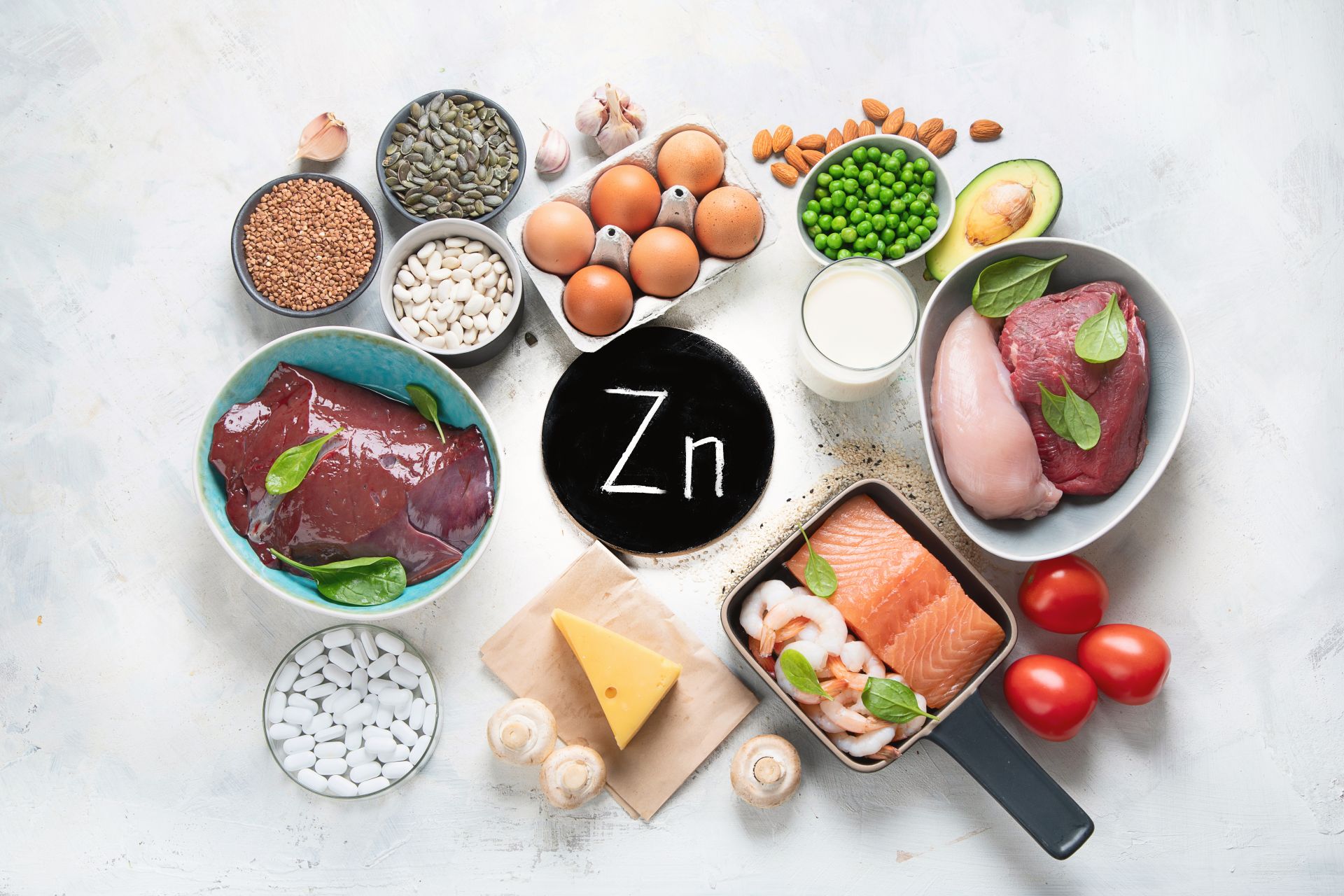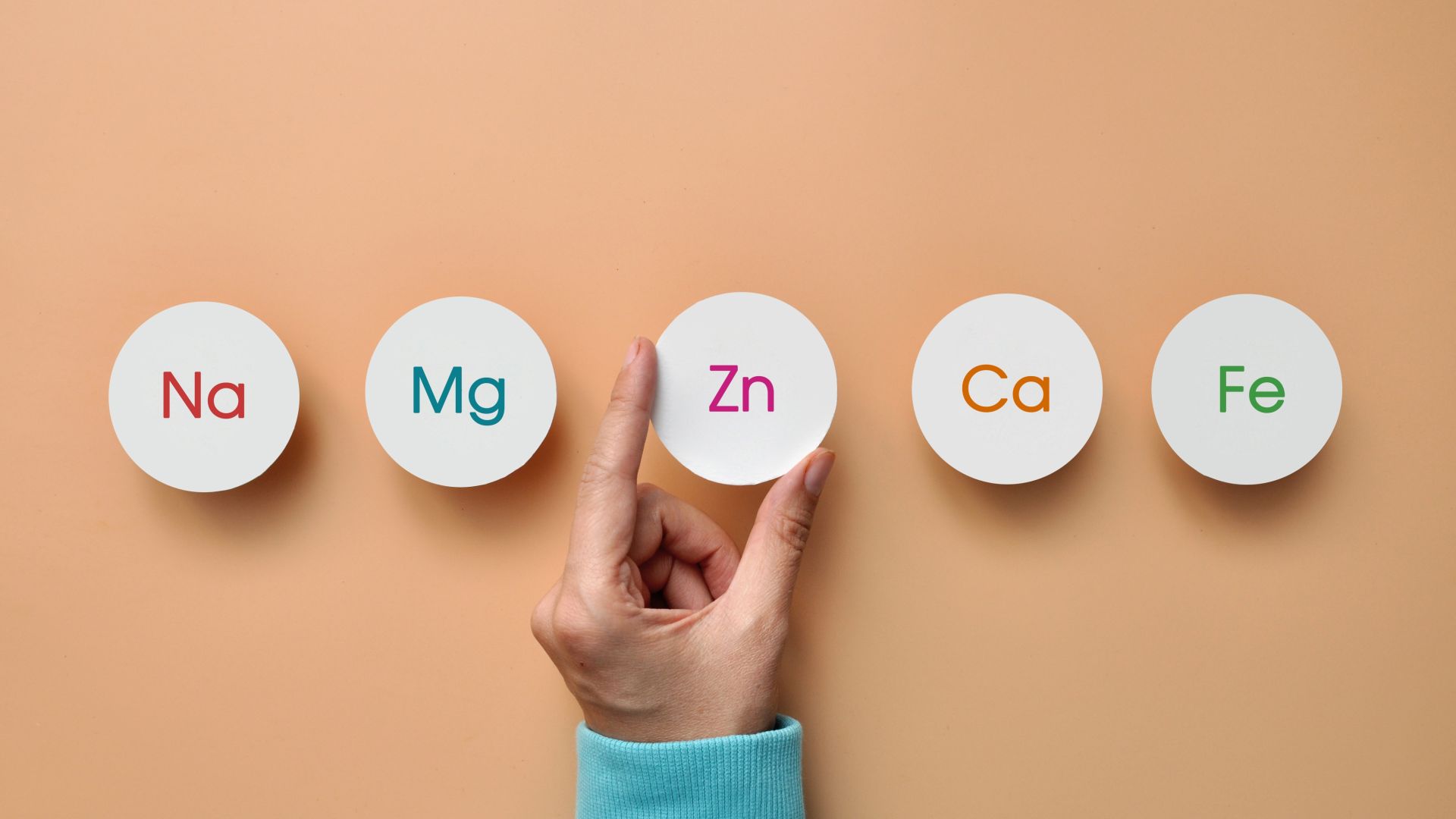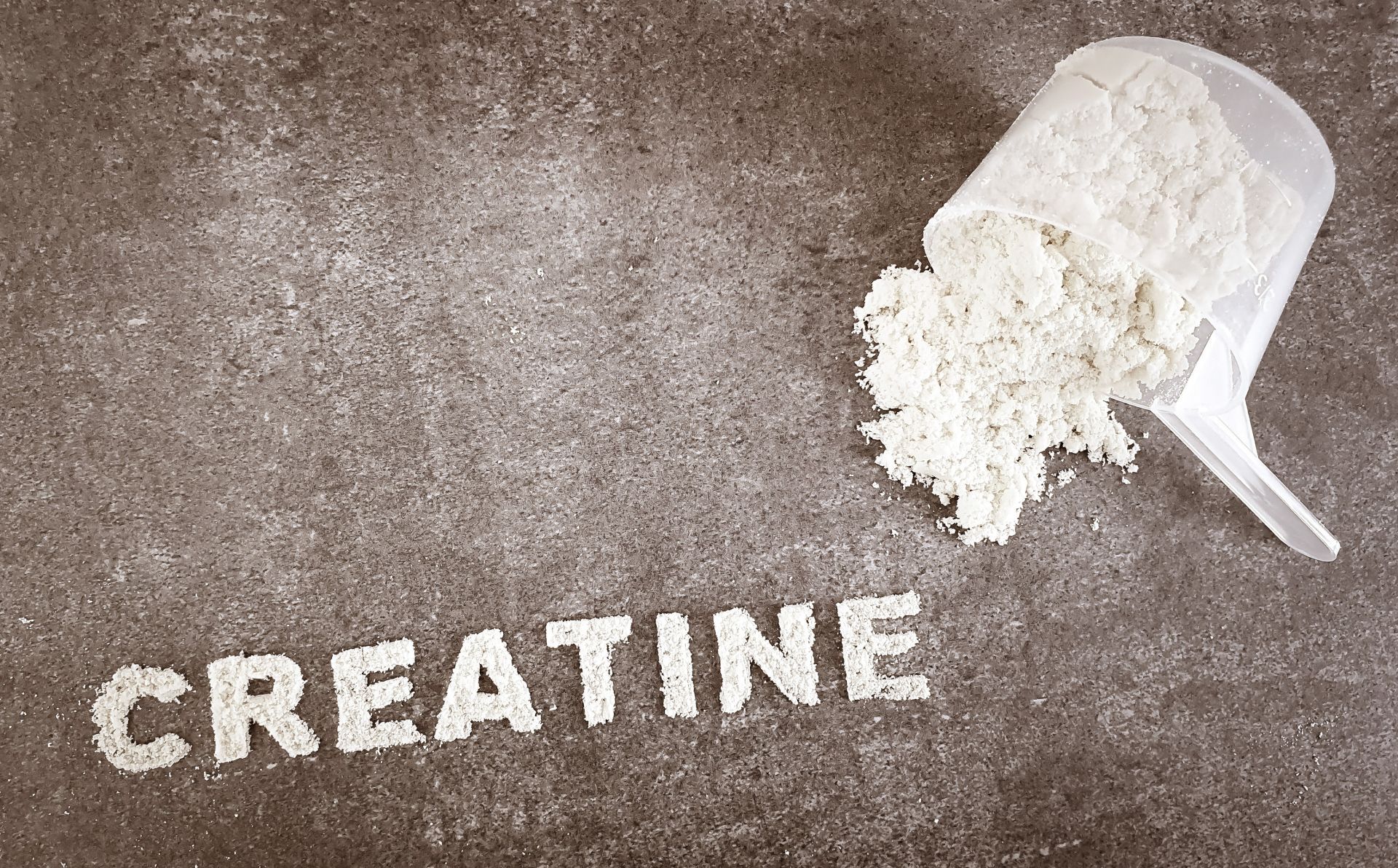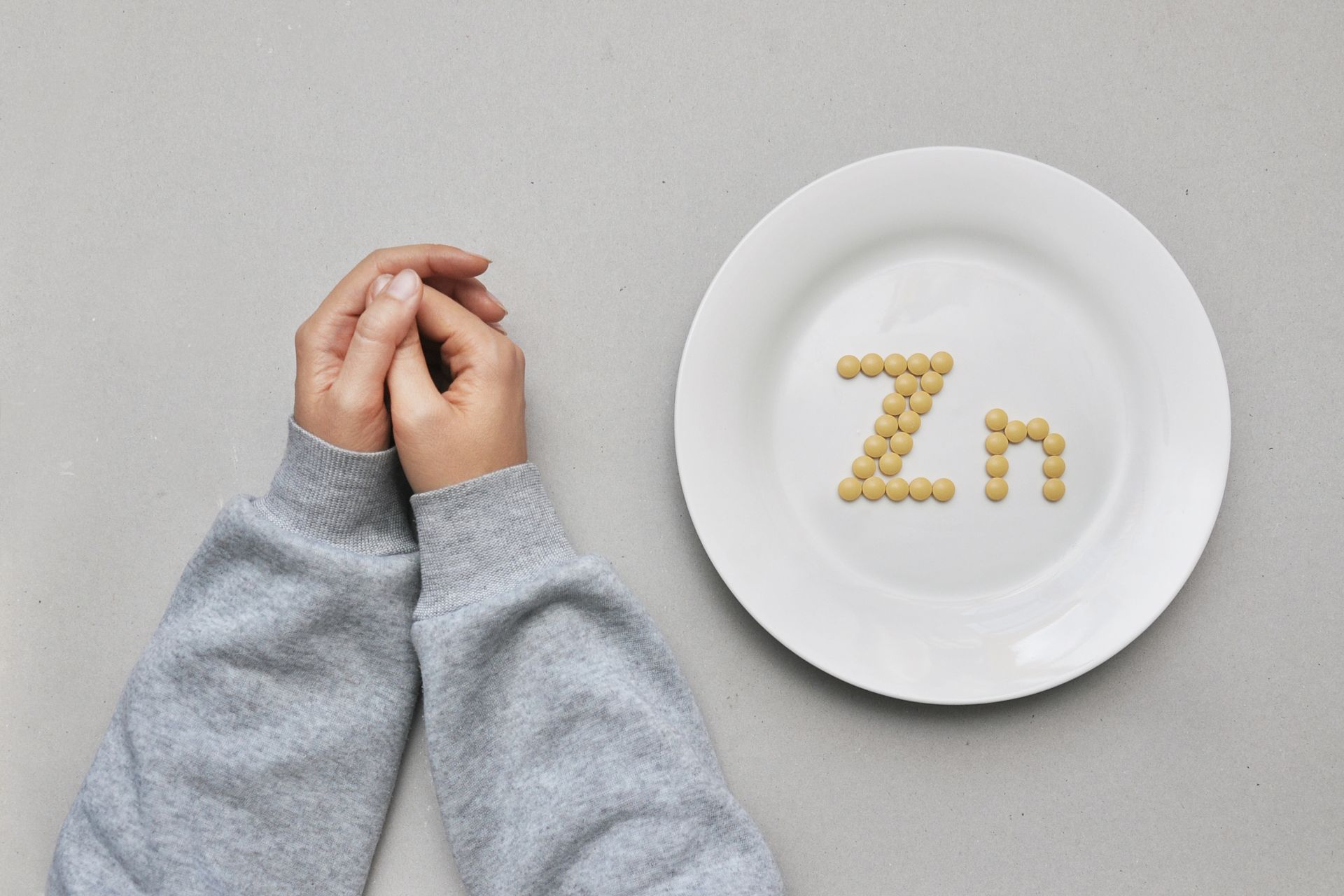Zinc in the diet - what are the benefits?

When arranging a diet for ourselves, we often pay attention, dy it provided enough iron or magnesium. And how often do we check the supply of zinc? Zinc in the diet is no less important, and the frequency of its deficiency indicates that it needs to pay much more attention to its intake.
From this article you will learn. why it is important to ensure that the diet provides adequate amounts of zinc, and what products have the most zinc. Read to the end!
- The role of zinc in the human diet
- Sources of zinc in the diet
- Zinc requirements
- Is zinc from the diet well absorbed?
- Relationship of zinc and copper
- Summary
The role of zinc in the human diet
Zinc is a trace element with an extremely broad impact on human health. When it is in abundance, we may underestimate it, but when there is even a slight deficiency, the effects will be felt. Even a slight decrease in the availability of zinc can weaken the body's protection against infections and prolong the healing time of wounds. A longer and deeper deficiency has much more severe effects, also including cognitive impairment, mood deterioration, hormonal problems, skin changes and more.
The body's supply of zinc is not large, so we need to replenish it dynamically. It is necessary to ensure a steady daily supply of zinc with the diet.
Interesting fact: We need zinc to experience flavors properly.
In short, we need zinc to:
- maintain proper functioning of the thyroid gland,
- efficiently produce testosterone,
- regulate appetite and correctly perceive tastes,
- maintain good skin condition,
- have strong bones,
- have good immunity to infections,
- maintain good mood and cognitive abilities.
Sources of zinc in the diet
Although zinc is one of the most abundant trace elements in the human body, it cannot be stored in significant amounts and therefore requires regular intake or supplementation. Zinc is found in a variety of foods, including:
- meat,
- fish,
- legumes,
- nuts.
Its absorption varies depending on the substrate in which it is found. Zinc-rich foods are considered a better source of zinc than, for example, legumes, nuts and cereals. The reason is the presence of phytic acid in plants, which strongly inhibits zinc absorption. Those following a vegan diet, and wishing to better utilize zinc from their diet, should properly process plant foods containing zinc. It is possible, for example, to soak pods or nuts in water to reduce the amount of phytic acid.
Below are more detailed data on the zinc content of various foods.
| Food | Milligrams (mg) of zinc per serving |
| Oysters, eastern, cultured, raw, 85 g | 32 |
| Oysters, Pacific, cooked, 85 g | 28,2 |
| Beef, lower leg, roasted, 85 g | 3,8 |
| Blue crab, cooked, 85 g | 3,2 |
| Breakfast cereal, enriched with 25% DV zinc, 1 serving | 2,8 |
| Oatmeal, plain and instant, not enriched, cooked in water, 1 cup | 2,3 |
| Pumpkin seeds, roasted, 28 g | 2,2 |
| Pork, middle sirloin, bone-in, grilled, 85 g | 1,9 |
| Turkey, breast, meat only, roasted, 85 g | 1,5 |
| Cheese, cheddar, 42 g | 1,5 |
| Shrimp, cooked, 85 g | 1,4 |
| Lentils, cooked, ½ cup | 1,3 |
| Sardines, canned in oil, drained, with bones, 85 g | 1,1 |
| Greek yogurt, natural, 170 g | 1,0 |
| Milk, 1% fat, 1 glass | 1,0 |
| Peanuts, dry roasted, 28 g | 0,8 |
| Rice, brown, long grain, cooked, ½ cup | 0,7 |
| Egg, large, 1 piece | 0,6 |
| Red beans, canned, ½ cup | 0,6 |
| Bread, whole grain, 1 slice | 0,6 |
| Fish, salmon, cooked, 85 g | 0,5 |
| Broccoli, chopped, cooked, ½ cup | 0,4 |
| Rice, white, long grain, cooked, ½ cup | 0,3 |
| Bread, white, 1 slice | 0,2 |
| Cherry tomatoes, raw, ½ cup | 0,1 |
| Blueberries, raw, ½ cup | 0,1 |
Even at first glance, it is clear that oysters are the undisputed leader in providing zinc.
Zinc requirements
According to current recommendations in Poland, the daily requirement for zinc in an adult is 10 mg.
As part of preventive health care or to correct a mild deficiency, a dose of 15 mg per day of zinc from a supplement is usually used. However, in cases where zinc supplementation has a specific purpose, such as suppressing infections, improving skin quality, and supporting hormonal balance, the doses used in the study were several times higher.
Zinc requirements increase during pregnancy and lactation.
Below is a table of zinc requirements by gender.
| Age | Men | Women | Pregnancy | Lactation |
| From birth to 6 months* | 2 mg | 2 mg | - | - |
| 7-12 months | 3 mg | 3 mg | - | - |
| 1-3 years | 3 mg | 3 mg | - | - |
| 4-8 years | 5 mg | 5 mg | - | - |
| 9-13 years | 8 mg | 8 mg | - | - |
| 14-18 years | 11 mg | 9 mg | 12 mg | 13 mg |
| 19+ years | 11 mg | 8 mg | 11 mg | 12 mg |
*Note: values for children from birth to 6 months are approximate.

Is zinc from the diet well absorbed?
Zinc is absorbed in the small intestine. The bioavailability of zinc from food is estimated at an average of 33%. In comparison, zinc from an aqueous solution administered on an empty stomach has a bioavailability of 60-70%.
The bioavailability is strongly dependent on the environment of zinc, especially the presence of phytates in the same meal. Phytic acid most severely reduces zinc bioavailability. The presence of iron also has a negative effect, and some sources say calcium as well. On the positive side, the presence of protein should have a positive effect.
The efficiency of absorption also depends on the initial degree of saturation of the body with zinc. The greater the deficiency, the more readily the body will absorb the element from food. On the other hand, a saturated body absorbs zinc more slowly, because its needs are not so great. In this case, self-regulatory mechanisms work great.
Relationship of zinc and copper
Zinc and copper have a peculiar relationship. They quarrel a little with each other, but not, however, they cannot live without each other. Excessive zinc supply depletes the body's copper stores. Its over-supplementation can even lead to secondary copper deficiency. And reciprocally, a large supply of copper depletes zinc. A balance is badly needed in this relationship.
When introducing supplementation with either of these micronutrients, great care must be taken so that one problem doesn't morph into another. The solution to this problem seems to be supplements that combine the right proportions of both zinc and copper in a single serving.
Summary
Zinc deficiency is quite easy to lead to when one does not pay attention to good dietary practices. It is therefore a real problem that can affect any of us. The main and most common risk factors in adults are a vegan diet, alcoholism and malabsorption. There are several aspects in the diet that need to be paid attention to in order to provide and absorb adequate amounts of zinc. Not only is the amount of it in the products we eat important, but also its environment. Most are known about the negative effects of phytic acid and iron on zinc bioavailability. Instead, the presence of protein is a factor that improves its absorption.
Sources:
 ⮜ Previous article
⮜ Previous article
What are the side effects of creatine use?
 Next article ⮞
Next article ⮞